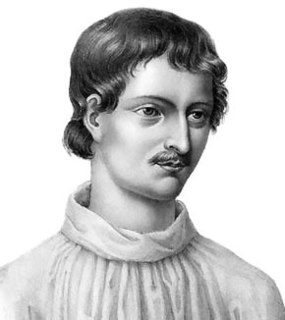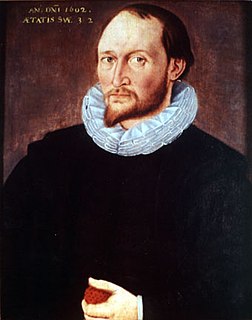 W
WAl-Ashʿarī was an Arab Sunni Muslim scholastic theologian and eponymous founder of Ashʿarism or Asharite theology, which would go on to become "the most important theological school in Sunni Islam".
 W
WFrancis Bacon, 1st Viscount St Alban,, also known as Lord Verulam, was an English philosopher and statesman who served as Attorney General and as Lord Chancellor of England. His works are credited with developing the scientific method and remained influential through the scientific revolution.
 W
WGiordano Bruno was an Italian Dominican friar, philosopher, mathematician, poet, cosmological theorist, and Hermetic occultist. He is known for his cosmological theories, which conceptually extended the then-novel Copernican model. He proposed that the stars were distant suns surrounded by their own planets, and he raised the possibility that these planets might foster life of their own, a cosmological position known as cosmic pluralism. He also insisted that the universe is infinite and could have no "center".
 W
WDignāga was an Indian Buddhist scholar and one of the Buddhist founders of Indian logic. Dignāga's work laid the groundwork for the development of deductive logic in India and created the first system of Buddhist logic and epistemology (Pramana).
 W
WPierre Gassendi was a French philosopher, Catholic priest, astronomer, and mathematician. While he held a church position in south-east France, he also spent much time in Paris, where he was a leader of a group of free-thinking intellectuals. He was also an active observational scientist, publishing the first data on the transit of Mercury in 1631. The lunar crater Gassendi is named after him.
 W
WThomas Harriot, also spelled Harriott, Hariot or Heriot, was an English astronomer, mathematician, ethnographer and translator who made advances within the scientific field. Thomas Harriot was recognized for his contributions in astronomy, mathematics, and navigational techniques. Harriot worked closely with John White to create advanced maps for navigation. While Harriot worked extensively on numerous papers on the subjects of astronomy, mathematics and navigation, the amount of work that was actually published was sparse. It was so sparse that the only publication that has been produced by Harriot was The Briefe and True Report of the New Found Land of Virginia. The premise of the book includes descriptions of English settlements and financial issues in Virginia at the time. He is sometimes credited with the introduction of the potato to the British Isles. Harriot was the first person to make a drawing of the Moon through a telescope, on 26 July 1609, over four months before Galileo Galilei.
 W
WThomas Hobbes was an English philosopher, considered to be one of the founders of modern political philosophy. Hobbes is best known for his 1651 book Leviathan, in which he expounds an influential formulation of social contract theory. In addition to political philosophy, Hobbes contributed to a diverse array of other fields, including history, jurisprudence, geometry, the physics of gases, theology, and ethics, as well as philosophy in general.
 W
WTitus Lucretius Carus was a Roman poet and philosopher. His only known work is the philosophical poem De rerum natura, a didactic work about the tenets and philosophy of Epicureanism, and which usually is translated into English as On the Nature of Things. Lucretius has been credited with originating the concept of the three-age system that was formalised in 1836 by C. J. Thomsen.